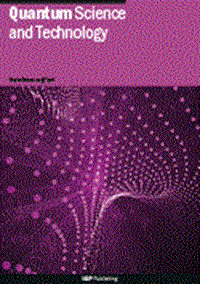Quantum-enhanced learning with a controllable bosonic variational sensor network
IF 5.6
2区 物理与天体物理
Q1 PHYSICS, MULTIDISCIPLINARY
引用次数: 0
Abstract
The emergence of quantum sensor networks has presented opportunities for enhancing complex sensing tasks, while simultaneously introducing significant challenges in designing and analyzing quantum sensing protocols due to the intricate nature of entanglement and physical processes. Supervised learning assisted by an entangled sensor network (SLAEN) (Zhuang and Zhang 2019 Phys. Rev. X 9 041023) represents a promising paradigm for automating sensor-network design through variational quantum machine learning. However, the original SLAEN, constrained by the Gaussian nature of quantum circuits, is limited to learning linearly separable data. Leveraging the universal quantum control available in cavity quantum electrodynamics experiments, we propose a generalized SLAEN capable of handling nonlinear data classification tasks. We establish a theoretical framework for physical-layer data classification to underpin our approach. Through training quantum probes and measurements, we uncover a threshold phenomenon in classification error across various tasks—when the energy of probes exceeds a certain threshold, the error drastically diminishes to zero, providing a significant improvement over the Gaussian SLAEN. Despite the non-Gaussian nature of the problem, we offer analytical insights into determining the threshold and residual error in the presence of noise. Our findings carry implications for radio-frequency photonic sensors and microwave dark matter haloscopes.利用可控玻色变分传感器网络进行量子增强学习
量子传感器网络的出现为增强复杂的传感任务提供了机遇,同时由于纠缠和物理过程的复杂性,也为设计和分析量子传感协议带来了巨大挑战。由纠缠传感器网络辅助的监督学习(SLAEN)(Zhuang 和 Zhang 2019 Phys. Rev. X 9 041023)代表了通过变量子机器学习实现传感器网络设计自动化的一种有前途的范式。然而,最初的 SLAEN 受量子电路高斯性质的限制,仅限于学习线性可分离数据。利用空腔量子电动力学实验中的通用量子控制,我们提出了一种能够处理非线性数据分类任务的广义 SLAEN。我们建立了物理层数据分类的理论框架,为我们的方法奠定了基础。通过训练量子探针和测量,我们发现了分类误差在各种任务中的阈值现象--当探针的能量超过一定阈值时,误差会急剧减小为零,从而显著改善高斯 SLAEN 的性能。尽管问题的性质是非高斯的,但我们提供了在存在噪声的情况下确定阈值和残余误差的分析见解。我们的发现对射频光子传感器和微波暗物质光环具有重要意义。
本文章由计算机程序翻译,如有差异,请以英文原文为准。
求助全文
约1分钟内获得全文
求助全文
来源期刊

Quantum Science and Technology
Materials Science-Materials Science (miscellaneous)
CiteScore
11.20
自引率
3.00%
发文量
133
期刊介绍:
Driven by advances in technology and experimental capability, the last decade has seen the emergence of quantum technology: a new praxis for controlling the quantum world. It is now possible to engineer complex, multi-component systems that merge the once distinct fields of quantum optics and condensed matter physics.
Quantum Science and Technology is a new multidisciplinary, electronic-only journal, devoted to publishing research of the highest quality and impact covering theoretical and experimental advances in the fundamental science and application of all quantum-enabled technologies.
 求助内容:
求助内容: 应助结果提醒方式:
应助结果提醒方式:


